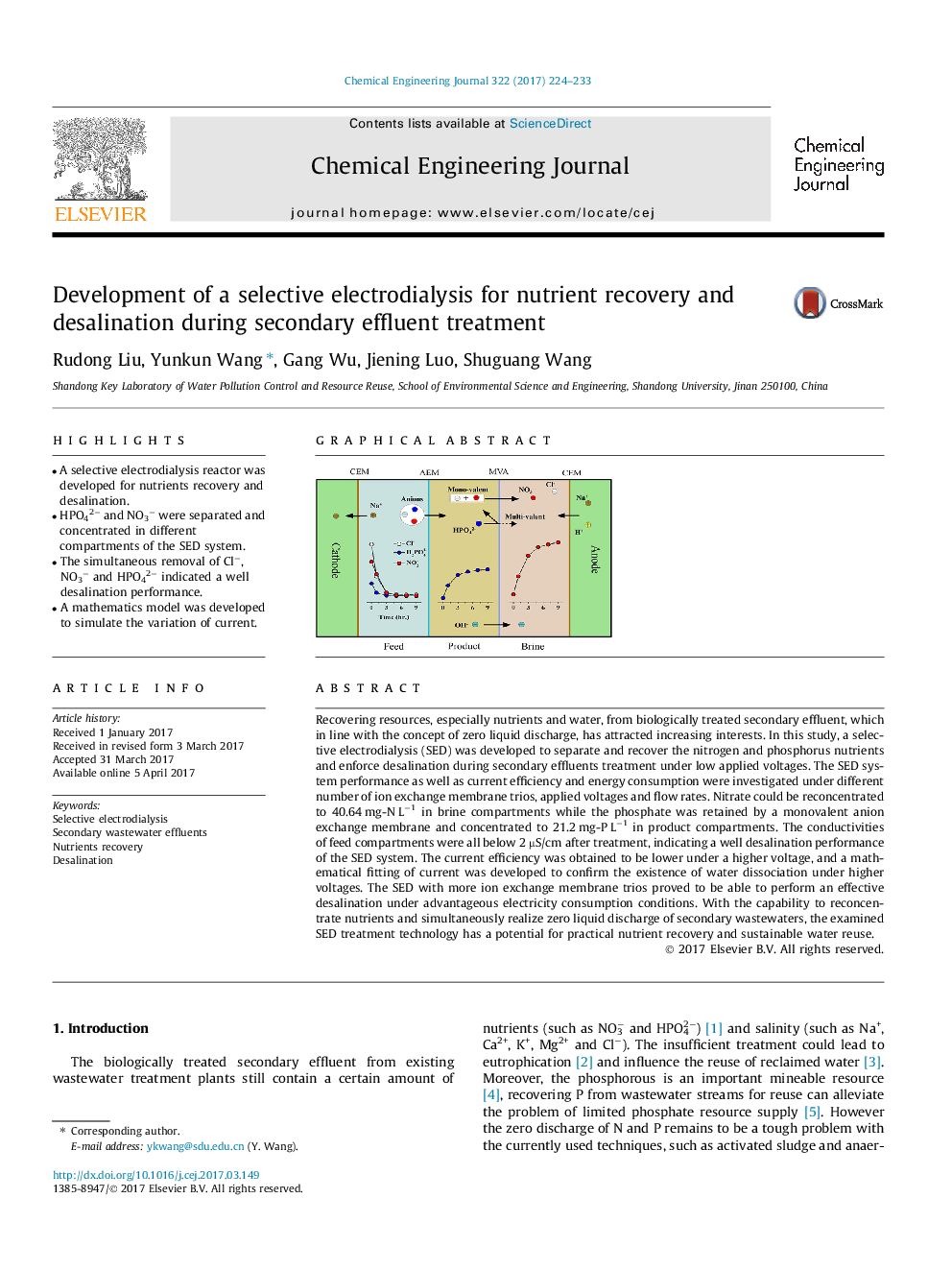| کد مقاله | کد نشریه | سال انتشار | مقاله انگلیسی | نسخه تمام متن |
|---|---|---|---|---|
| 6465630 | 1422956 | 2017 | 10 صفحه PDF | دانلود رایگان |
- A selective electrodialysis reactor was developed for nutrients recovery and desalination.
- HPO42â and NO3â were separated and concentrated in different compartments of the SED system.
- The simultaneous removal of Clâ, NO3â and HPO42â indicated a well desalination performance.
- A mathematics model was developed to simulate the variation of current.
Recovering resources, especially nutrients and water, from biologically treated secondary effluent, which in line with the concept of zero liquid discharge, has attracted increasing interests. In this study, a selective electrodialysis (SED) was developed to separate and recover the nitrogen and phosphorus nutrients and enforce desalination during secondary effluents treatment under low applied voltages. The SED system performance as well as current efficiency and energy consumption were investigated under different number of ion exchange membrane trios, applied voltages and flow rates. Nitrate could be reconcentrated to 40.64 mg-N Lâ1 in brine compartments while the phosphate was retained by a monovalent anion exchange membrane and concentrated to 21.2 mg-P Lâ1 in product compartments. The conductivities of feed compartments were all below 2 µS/cm after treatment, indicating a well desalination performance of the SED system. The current efficiency was obtained to be lower under a higher voltage, and a mathematical fitting of current was developed to confirm the existence of water dissociation under higher voltages. The SED with more ion exchange membrane trios proved to be able to perform an effective desalination under advantageous electricity consumption conditions. With the capability to reconcentrate nutrients and simultaneously realize zero liquid discharge of secondary wastewaters, the examined SED treatment technology has a potential for practical nutrient recovery and sustainable water reuse.
68
Journal: Chemical Engineering Journal - Volume 322, 15 August 2017, Pages 224-233
